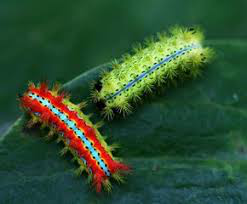
1.What’s the Chinese meaning of the underlined word “cannibalism”?
A 同类相食.
B 共享午餐.
C 糖果理论.
D 蜡烛理论.
解析:选A。词义猜测题。根据前文some of the caterpillars were having others for lunch可知cannibalism意为“同类相食”,故选A。
2.It's _____ to eat the same species.
A happy
B nutritious
C interesting
D impossible
解析:选B。细节理解题。根据第二段it's nutritious to eat the same species可知吃同类是很有营养的,故选B。
3.Why did Van Allen and his colleagues collect the caterpillars?
A They wanted to study their daily life.
B They wanted to study their lunch.
C They wanted to study their eating habits.
D They wanted to study disease transmission.
解析:选D。细节理解题。根据第二段Van Allen and colleagues collected the caterpillars to study disease transmission in lepidoptera—moths and butterflies.可知范·阿伦和他的同事们收集了这种毛毛虫是来研究疾病传播,故选D。
4.What does cannibalism actually prevent from getting into the group?
A Butterflies.
B Disease.
C Animals.
D Birds.
解析:选B。细节理解题。根据最后一段Our main point is that it is an individually risky thing for a caterpillar; however, for groups, the cannibalism actually prevent diseases from getting into the group in the first place.可知同类相食从一开始就预防了传染病进入该种群,故选B。
5.Where can we read the passage?
A In an advertisement.
B In a science fiction.
C In a fairy tale.
D In a journal.
解析:选D。推理判断题。根据最后一段最后一句Van Allen's study is in the journal American Naturalist.可知范·阿伦的这项研究发表在了《美国自然主义者》杂志上,故可在杂志上读到这篇文章,故选D。